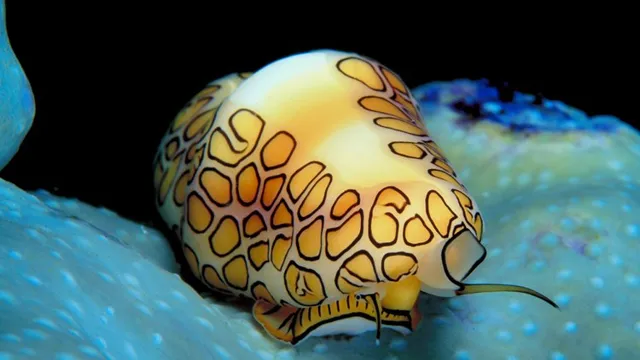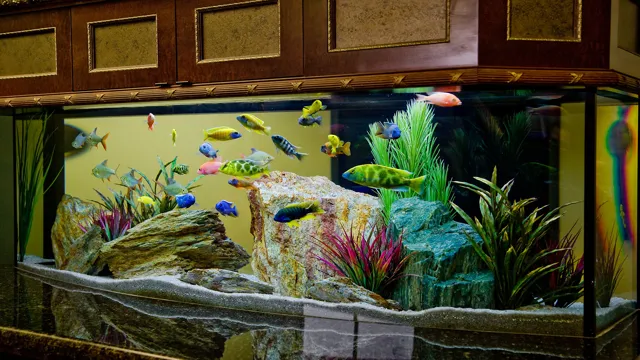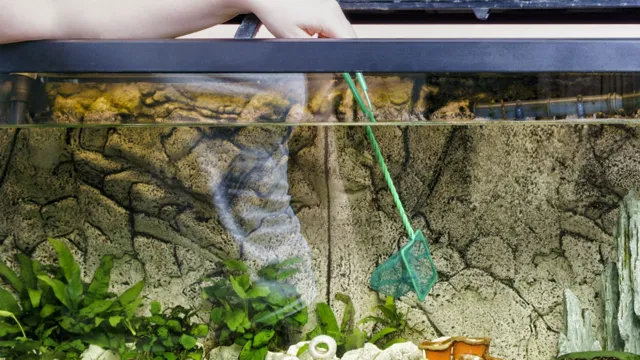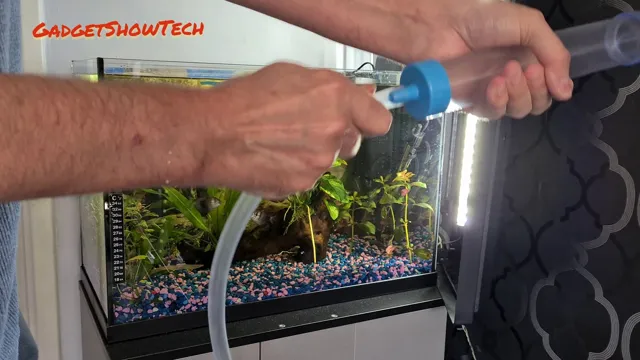If you’re a proud owner of an aquarium, then you know how captivating the underwater world can be. One of the creatures that always catches our attention is the aquarium snail. While snails may not seem as exciting as colorful fish or exotic plants, they play an essential role in maintaining a healthy aquatic ecosystem.
But what happens when your aquarium snail population starts to grow? How do these slimy creatures reproduce, and is it something you need to worry about? In this blog, we’ll delve into the fascinating world of aquarium snail reproduction and give you all the information you need to keep your snail population under control.
Introduction
Aquarium snails are fascinating creatures that can be both beneficial and concerning to fishkeepers. One of the most common questions asked by hobbyists is how quickly do aquarium snails reproduce? The answer is, unfortunately, it depends on the type of snail you have. Some species, like the Malaysian Trumpet Snails, can lay hundreds of eggs in a month and rapidly populate an aquarium.
Other species, like the Assassin Snail, reproduce more slowly and are less likely to overpopulate a tank. As a general rule, snails will reproduce more quickly in environments with abundant food and suitable living conditions. It’s important for aquarists to monitor their snail populations and take steps to control their numbers if necessary.
One effective method is to remove any excess food from the tank and consider adding snail-eating fish or creatures like Pufferfish or Crayfish.
Defining Aquarium Snails
Aquarium snails are fascinating creatures that can add interest and diversity to your aquarium. These gastropods come in various sizes, shapes, and colors, with some being more desirable than others. Most aquarium snails are detritivores and algae eaters, which means they feed on leftover food particles, dead plants, and algae.
Some species, such as the apple snail, can act as efficient cleaners of the aquarium, helping to manage the levels of nitrates and phosphates. While others, like the Ramshorn snail, can proliferate rapidly and become nuisance pests. Overall, aquarium snails can be a valuable asset to any fish tank, but understanding their biology, behavior, and role in the ecosystem is crucial for maintaining a healthy and functional aquarium.

Understanding Snail Reproduction
Snail reproduction is a fascinating process that involves both asexual and sexual reproduction. One of the most unique aspects of snail reproduction is their ability to switch between both forms depending on their environmental conditions. In asexual reproduction, a snail can reproduce on its own without the need for a partner.
They can lay dozens of eggs at a time and hatch and grow into new snails. In contrast, sexual reproduction requires two snails to mate and produce offspring through the fertilization of eggs. Snails have both male and female reproductive organs, making it possible for them to mate with any other snail they encounter.
This reproductive process is essential for maintaining the snail population and ensuring their survival in their natural habitats. Understanding the reproductive process of snails opens up a whole new world of scientific discovery and appreciation for these fascinating creatures.
Factors Affecting Reproduction
Aquarium snails are fascinating creatures that reproduce at different rates depending on various factors. The speed at which they reproduce can be affected by factors such as food availability, water quality, tank size, and temperature. If the snails are well-fed, they tend to reproduce more quickly, whereas a lack of food can slow down their reproduction rate. (See Also: How to Care for Aquarium Frogs: Tips for a Healthy and Happy Environment)
Water quality also plays a significant role in their reproductive rate as poor water quality can lead to stress and sickness, ultimately affecting their reproductive health. Tank size is an essential factor as well, as overcrowding can stress the snails and limit their breeding. The temperature of the water can also impact their reproductive rates, with warmer temperatures generally being more conducive to breeding.
By maintaining a healthy environment that includes a consistent food supply, clean water, and appropriate temperature, aquarium snails will reproduce at a steady rate, providing a diverse, sustainable environment for aquarium enthusiasts.
Species of Aquarium Snails
As an aquarium enthusiast, one important thing to consider when breeding snails in your tank is the factors affecting their reproduction. The species of aquarium snails you keep in your tank may have varying requirements for breeding. However, some factors affecting their ability to reproduce may include water temperature and quality, feeding habits, tank size, and population density.
These factors can have a significant impact on the success of snail reproduction in your aquarium. For instance, warmer water temperatures can expedite snail breeding, while water quality issues such as high ammonia or nitrate levels can pose challenges to your snails’ reproductive health. Additionally, the availability of food and space within the tank can influence the success of your snail breeding efforts.
Ultimately, ensuring optimal conditions for your snails to reproduce will require careful observation and regular maintenance of your tank’s environmental factors. By providing the right conditions and ensuring that these factors are in balance, your aquarium snails can thrive and reproduce successfully.
Environmental Conditions
Environmental conditions play a crucial role in regulating reproduction in various organisms. Different environmental factors such as temperature, humidity, light intensity and duration, food availability, and water availability can impact the reproductive process. For instance, the optimal temperature range required for the survival and reproduction of different species may vary from one another, and a slight change in the temperature range can affect the reproductive cycle.
Similarly, inadequate water availability can cause stress and reduce the reproductive performance of some species. Food availability can also impact the reproductive process, particularly for species that rely on a specific food source for sustenance. The amount and quality of food available can influence the hormonal balance, which, in turn, affects reproductive health and fertility.
In conclusion, environmental conditions are significant determinants of reproductive success in different organisms, and it’s essential to understand how these factors interplay and affect the reproduction process.
Rate of Reproduction
If you’re considering adding aquarium snails to your tank, you may be wondering just how quickly they can reproduce. Well, the answer is that it depends on the species. Some snails, like the Malaysian trumpet snail, can reproduce very quickly under ideal conditions, increasing in population by up to 400% in just a few weeks. (See Also: How to Get My Aquarium pH to 8.0: Expert Tips and Tricks)
Other species are less prolific, but you should always be cautious when introducing snails to your tank. If conditions are favorable, snails can quickly overrun your aquarium and become a nuisance. To prevent this, make sure to control feeding and waste levels in your tank, and remove any snails that you do not want.
Additionally, if you want to keep snails in your aquarium, consider adding some natural predators like loaches or assassin snails to keep their numbers in check. Overall, if you’re careful and keep a watchful eye on your snail population, you can enjoy these fascinating creatures without worrying about them taking over your tank.
Generation Time
Generation time is a crucial factor in determining the rate of reproduction for a particular species. It refers to the average amount of time it takes for an individual organism to reach maturity and then reproduce. Some species have a short generation time, which means they can reproduce quickly and produce many offspring.
On the other hand, some species have a long generation time, and their ability to reproduce is slower. For example, bacteria can have a generation time of just a few hours, while elephants can take over a decade to reach reproductive maturity. This variation in generation time plays a significant role in determining the reproductive potential and overall population growth of a species.
It also affects how quickly a population can adapt to changes in their environment and how likely they are to survive challenges like disease or habitat destruction. Organisms that have shorter generation times generally have a higher reproductive rate, which helps them to adapt better to new conditions. In summary, the generation time of a species is a critical factor in determining its rate of reproduction and overall survival strategy.
Number of Offspring
Rate of Reproduction The rate of reproduction is the number of offspring produced by a species over a certain period. It is influenced by various factors such as environmental conditions, access to resources, and social behavior. Some species reproduce in large numbers, such as insects and rodents, who produce hundreds of offspring in a single breeding season.
On the other hand, larger animals tend to reproduce less frequently and have fewer offspring, often investing more resources into each individual offspring. For example, elephants only give birth every few years, but their young are highly developed and have a long maturation process, ensuring their survival in the harsh savannah environment. Understanding the rate of reproduction is essential for conservation efforts and managing populations to ensure the long-term survival of different species.
Conclusion
In short, aquarium snails reproduce faster than rabbits on steroids. These slimy critters are known for their incredible ability to multiply, seemingly overnight. If you’re not careful, you may end up with more snails than water in your tank.
So, if you’re planning on getting aquarium snails, be prepared for a reproductive rollercoaster ride. And if you’re not into that kind of adventure, well, maybe stick with plants or fish instead.”
FAQs
What is the reproduction cycle of aquarium snails?
Aquarium snails typically reproduce every 4-6 weeks, with each clutch containing around 30-40 eggs.
(See Also: How to Bring Down Nitrite Levels in Freshwater Aquarium: Top Effective Ways)
How can I tell if my aquarium snails are reproducing?
Look for small, transparent egg sacs in your aquarium, or notice an increase in the number of visible snails over time.
Do all aquarium snails reproduce at the same rate?
No, different species of aquarium snails have varying reproduction rates depending on factors such as temperature and feeding habits.
Can I control the reproduction of my aquarium snails?
Yes, by carefully managing feeding and environmental factors such as temperature and pH levels, you can help control snail reproduction.
What impacts the growth rate of aquarium snail eggs?
Water temperature, water quality, and nutrition levels can all impact the growth rate of aquarium snail eggs.
How long does it take for aquarium snail eggs to hatch?
Depending on factors like temperature and water quality, it can take between 10 days and a month for aquarium snail eggs to hatch.
Will a single snail reproduce on its own in my aquarium?
No, you’ll need at least one mate in order for aquarium snails to reproduce.







